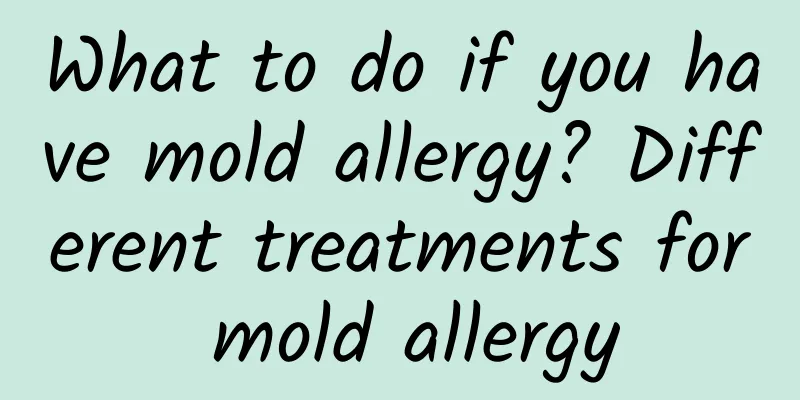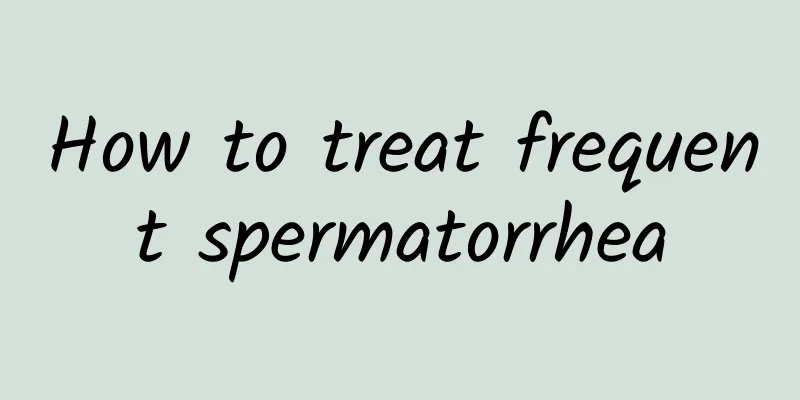What to do if you have mold allergy? Different treatments for mold allergy

|
Mold is a common pathogen in people's daily life. Since there are many types of mold, different molds will cause allergies in different parts of the body. When mold allergy occurs, it is necessary to distinguish the type of mold that is causing the allergy and then treat it accordingly. 1: Aspergillus rhinosinusitis1: Allergic rhinosinusitis should be treated with a combination of surgery and medication. Nasal polyps should be removed by endoscopic surgery to maintain smooth drainage and completely remove allergic mucin and diseased sinus mucosa. Oral glucocorticoids can also be taken to reduce inflammation, eliminate edema, and effectively prevent recurrence. Generally, the dosage of prednisone should be reduced after it takes effect. II. Treatment of Pulmonary Aspergillosis1: For patients with parasitic pulmonary aspergillosis, surgical resection is recommended when hemoptysis of pulmonary aspergilloma is frequent or large. If the underlying disease is not suitable for surgery or the lung function is impaired and the patient is not suitable for surgery, bronchial artery embolization can be used to stop bleeding. 2: Glucocorticoids are the first choice for treatment of allergic pulmonary aspergillosis. 3: For invasive pulmonary aspergillosis, voriconazole, itraconazole, caspofungin, and lipid-containing preparations of amphotericin B or conventional preparations are recommended. 3: Aspergillosis of the skin, eyes, ears, etc.1: Treatment with polar antifungal drugs, such as voriconazole, itraconazole, amphotericin B, caspofungin, etc. In addition to drug treatment, local debridement treatment can also be used for primary cases. Intravenous amphotericin B or voriconazole can be used for endophthalmitis. If surgical treatment is required, amphotericin B can also be injected locally. Keratitis should be treated with local amphotericin B eye drops, or local or systemic voriconazole. At the same time, different surgical treatments can be selected according to the condition. External auditory canal Aspergillus infection can be treated with topical boric acid, acetic acid irrigation solution, or azole antifungal ointment. 4: Cerebral Aspergillosis1: Available drugs include voriconazole, itraconazole, posaconazole, and intravenous infusion of large-dose amphotericin B lipid preparations, combined with stereotactic abscess drainage or cranial lesion removal, which have better therapeutic effects. Five: Now that you know how to treat Aspergillus allergyAfter the treatment, we also need to remind you that the most common fungus in pillows is Aspergillus. Therefore, in order to reduce the occurrence of Aspergillus allergies, it is recommended that you clean your pillow covers and pillow cores regularly. If someone in your family is allergic to dust mites, it is best to expose the pillow to the sun frequently before cleaning. |
<<: What to do with thyroid nodules? How to treat thyroid nodules
>>: What to do if you have allergies? Dietary treatments for allergies
Recommend
White spots on the glans
The glans is a very important male reproductive o...
Is it good for men to drink breast milk?
Breast milk is an important food source to ensure...
What is the reason for the dull pain in the lower abdomen of men?
We know that women's abdominal pain may be du...
As long as this thing enters the stomach, the babies born are all boys
Whether a baby is a boy or a girl is determined b...
Symptoms of fungal glans
The male body has also received a lot of attentio...
How to treat male urinary tract infection
In our daily life, we encounter many physical dis...
What is the best way to treat chronic prostatitis?
Prostatitis is a very common male disease in life...
How to make chicken soup to nourish the kidneys
Chicken soup is a common nourishing food. In our ...
What medicine can cure glans sensitivity?
Drugs that reduce sexual nerve sensitivity can us...
Is laser treatment effective for chronic prostatitis?
Laser treatment is only effective for chronic pro...
What causes right chest pain in men?
Right chest pain in men may be caused by excessiv...
Is it true that a man with a lot of beard means he is more capable?
Beards, as a secondary sexual characteristic of m...
Male internal reproductive system
The male reproductive system is mostly on the out...
Can necrospermia be treated?
Don't lose confidence in treatment after necr...
Does obesity in general lead to infertility in men?
Nowadays, there are more and more obese people. O...









